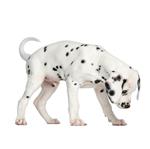Fighting Fleas
What are fleas?
Fleas are the most common external canine parasite. They are approximately 1-2mm in size and live from 7-14 days, allocating their time between laying eggs and living and feeding on your dog. Not only are they the number one cause of skin problems on dogs but they can transmit diseases and even cause anaemia, especially in young puppies.
How do you know if Your Dog is playing host to fleas?
If your dog is excessively licking and scratching, it may well be due to fleas. For more evidence, look for the following:How to treat and prevent fleas?
Tablets
One of the most effective ways to kill and prevent fleas is via oral tablets from your vet. These tablets can start killing fleas within 30-minutes and protect for a month.Spot on Treatments
A liquid treatment that you put on the back of your dog’s neck to kill fleas and their eggs. Again a prescription from your vet is generally the most effective method.Shampoos
These are mainly useful for killing existing fleas but not as a prevention. Always follow the instructions carefully.Collars
Historically, flea collars had a limited effectiveness. However, there is a new generation of prescription flea collar available from your vet. They work by dispersing the active ingredient through your dog’s body rather than simply sitting on your dog’s neck. It’s always wise to get your vet’s opinion on which flea treatment is best for your dog.Tackling Ticks
What are Ticks?
Ticks are eight legged parasites that attach themselves to your dog and survive by drinking their blood. As they fill themselves on blood they increase to the size of a small pea. Ticks hover on tall grass and shrubs waiting for a host, such as your dog, to pass by and therefore you dog is most likely to pick up a tick whilst walking in long grass or woods. They can cause severe irritation and also transmit disease.
Ticks are eight legged parasites







